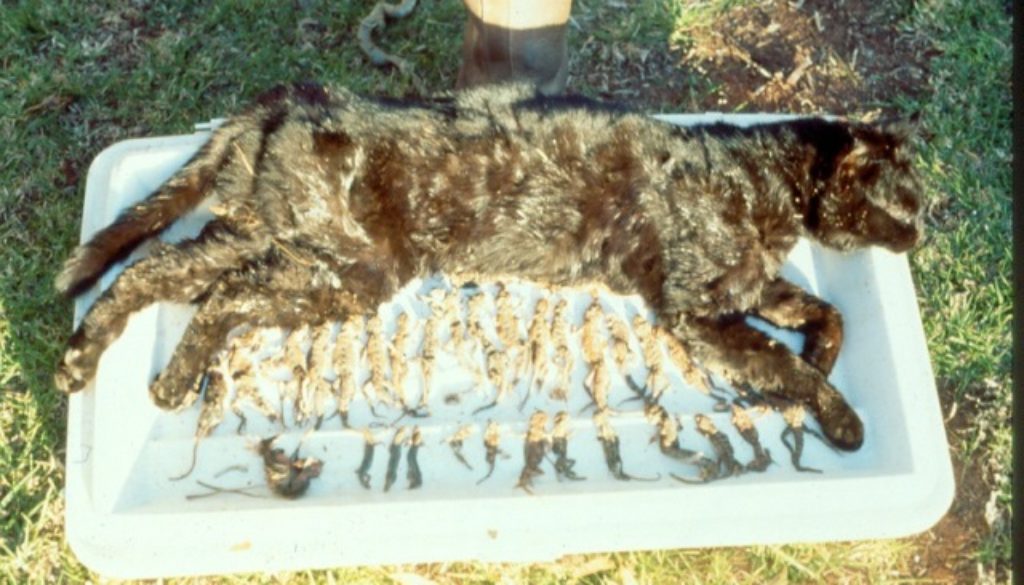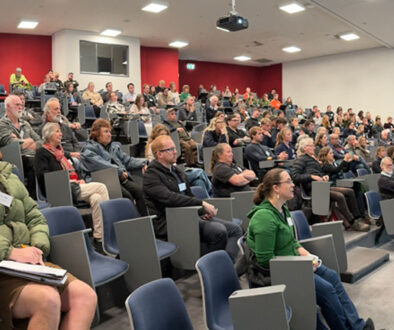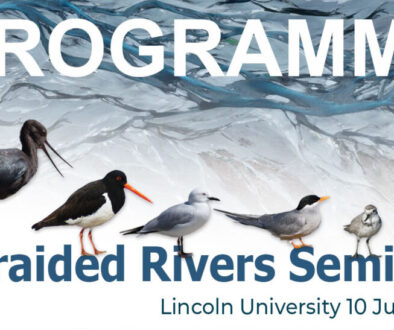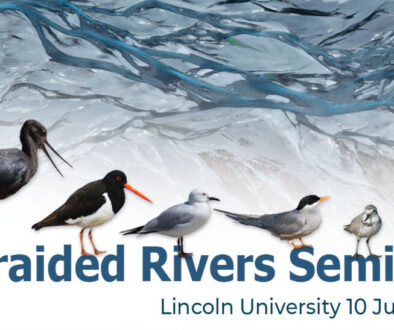Newsletter #21
Hello all,
Thank you to everyone who came along to our Braided Rivers Workshop last Tuesday, and a very special thank you to our speakers, who somehow managed to cram an extraordinary amount of high quality information and cutting-edge research into 25 presentations. I have included direct links to all of the PDFs at the bottom of this newsletter. It was truly gratifying to see so many people concerned about the state of our braided rivers, and just as interested in learning what\’s being done about it.
At the workshop we also launched the braided river wing of The Flock in conjunction with Pukorokoro Miranda Shorebird Centre. The Flock is a fun and creative project that everyone from pre-schoolers to grandparents can join. It includes the first Braided Rivers Teaching Resource for schools, teachers, and educators, and 41 fact sheets for each of the South Island rivers and estuaries important to our braided river birds. I\’m looking forward to seeing everyone\’s creations!
Cheers,
Sonny Whitelaw,
BRaid Manager (manager@braid.org.nz)
The 2015-2016 survey of Canterbury black-billed gulls is s now available, courtesy of Wildlife Management International.
Getting people to change their (poor) environmental behaviours: Awareness of a problem doesn\’t automatically result in behavioural changes to correct it. And this has profound implications for how we as conservation professionals and communicators operate.
Canterbury\’s cow census for 2015 put us at 1.2 million cows – a conservative effluent equivalent of over 16 million people, but without the sewage treatment plants. Just as interesting as Lam Phan\’s article, is the insight into human nature measured by the degree of vitriol in the comments.
NZ perspective of the Citizen Science conference in Berlin in May: Although funding (in NZ) is reduced…access to sources both national and international has enabled many impressive collaborations to grow and flourish.
Photo competition \’Picture or precious streams and waterways\’ for digital or print photos and video taken between 1st July 2015 and 13th June 2016
Film-making workshop: The Outlook for Someday: Free one-day and two-day workshops from June to August 2016, open to students from school years 7 to 13 (age 11 to 18), as well as teachers and youth workers who want to engage with The Outlook for Someday as a vehicle for sustainability film-making.
Roundup (no pun intended) of recent news from around the web; mostly peer-reviewed journal articles.
- Concerns over use of glyphosate-based herbicides and risks associated with exposure: a consensus statement: Myers et al., Environmental Health 15:19; BioMed Central; DOI: 10.1186/s12940-016-0117-0
- Open-access journal eLife gets £25 million boost. The unashamedly elitist journal competing with biology’s traditional ‘big three’, Nature, Science and Cell, use working scientists as editors, is open access, and cost nothing to publish.
- Insect thermal baggage: cold and heat hardiness in range-expanding populations: Nature Climate Change 6,543–544DOI:10.1038/nclimate3042
- Environmentally relevant concentrations of microplastic particles influence larval fish ecology: Science 03 Jun 2016: Vol. 352, Issue 6290, pp. 1213-1216 DOI: 10.1126/science.aad8828 (if you can\’t access it, The Washington Post has an excellent article, and why it matters to birds that eat fish…)
- Migratory birds: Living sentinels for climate change effects: Science 352:6287; DOI: 10.1126/science.aaf6544.
- Second paper in the same issue of Science: Body shrinkage due to Arctic warming reduces red knot fitness in tropical wintering range: DOI: 10.1126/science.aad6351
- If you can\’t access the above articles, this article in the New York Times about Red Knots explains some of the issues. While red knots are not braided river birds, there are implications
Thanks to those who have contributed to this newsletter. Please keep news items coming.
BRaid\’s next meeting: Friday 4.00pm 24 June at Ngai Mahi Road.
The 2016 Upper Waimakariri Bird Survey will be on Sunday 16 to Thursday 20 October. Please let us know if you would like to participate. Email manager@braid.org.nz
Membership If you are not already a member of BRaid, you can join as a General, Casual, or Representative member. General Membership is a modest $20/annum, giving you voting rights and the opportunity to have a say in BRaid\’s activities.




